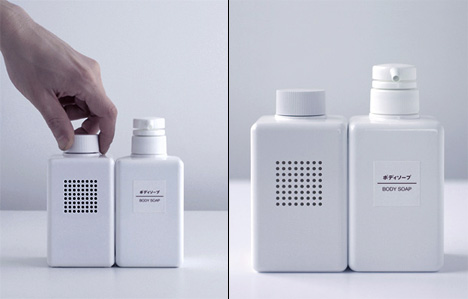Many design awards have their own answers about what makes a product well designed; it must be original, it must be aesthetically appealing, and it must be useful. Similarly, marketing researchers have also studied that newness, beauty, and usefulness contributes to the evaluation of a product. However, whether product usage context or the outer space of a product affects whether a product is well designed has been little discussed.
I found a nice example which shows the impact of usage context on design. Designers from Industrial Facility, a UK design studio, developed a Bath Radio for Muji. It is a radio but looks like a set of shampoo and rinse. This example shows that consumers may consider a product well designed when its design matches its usage context.

